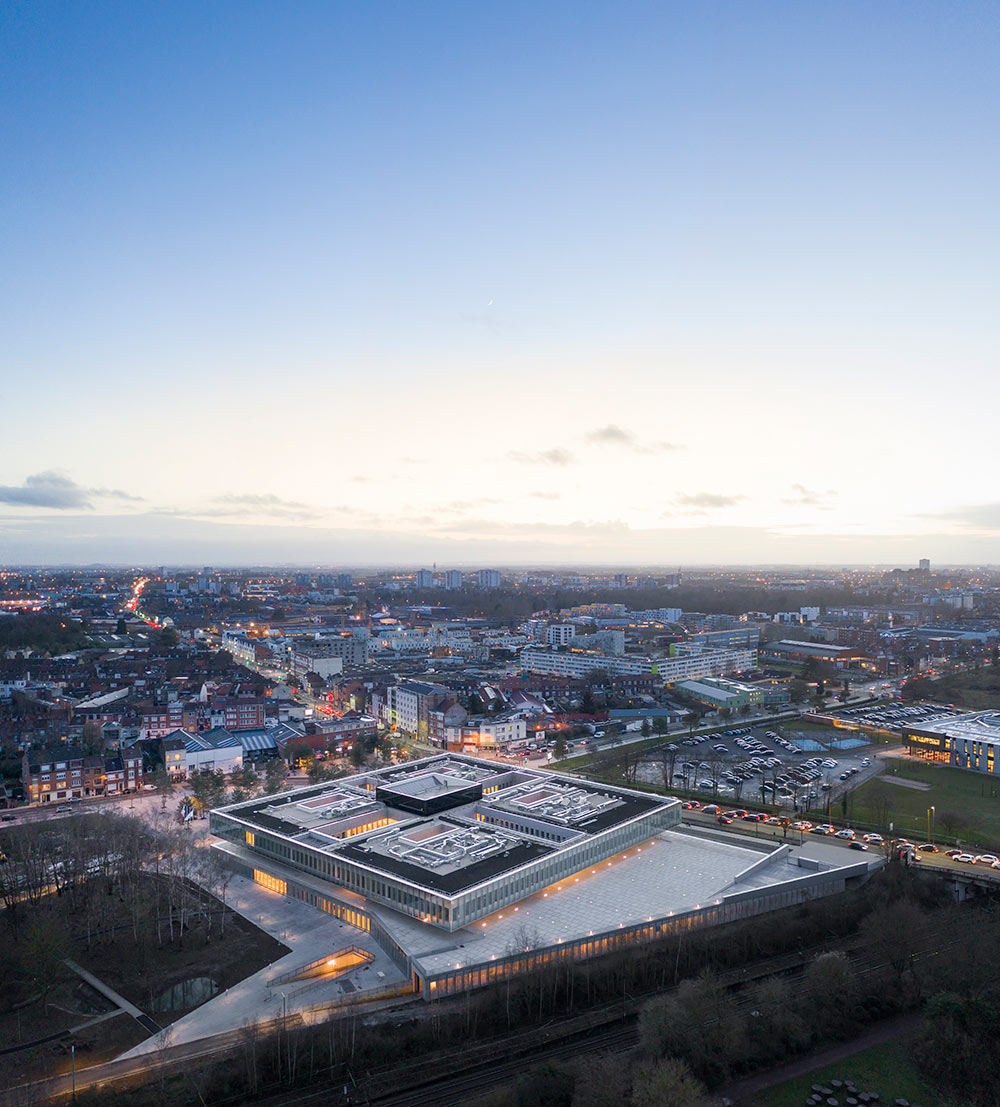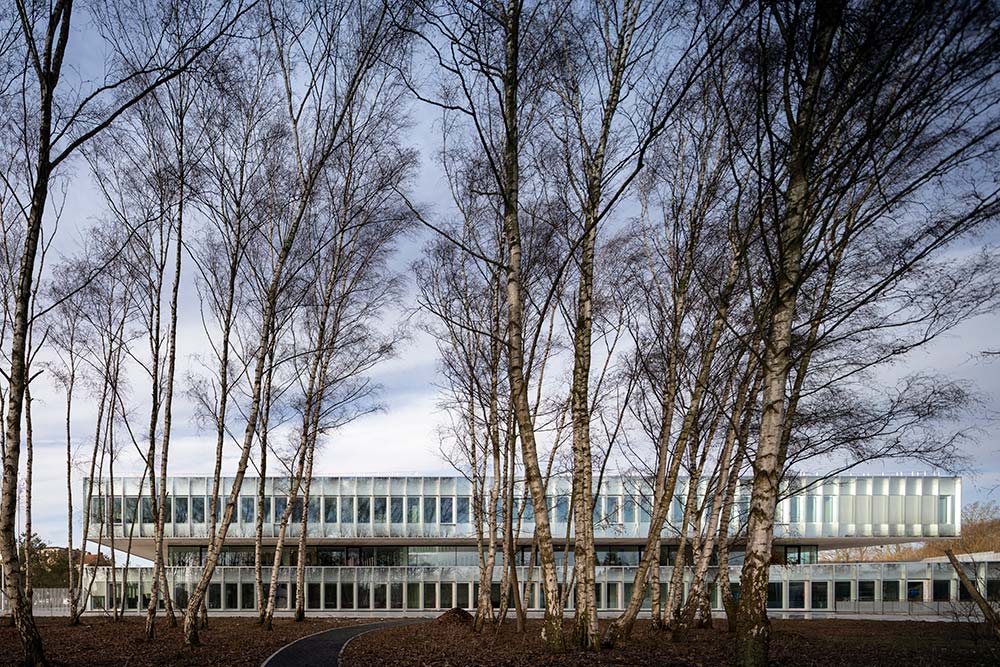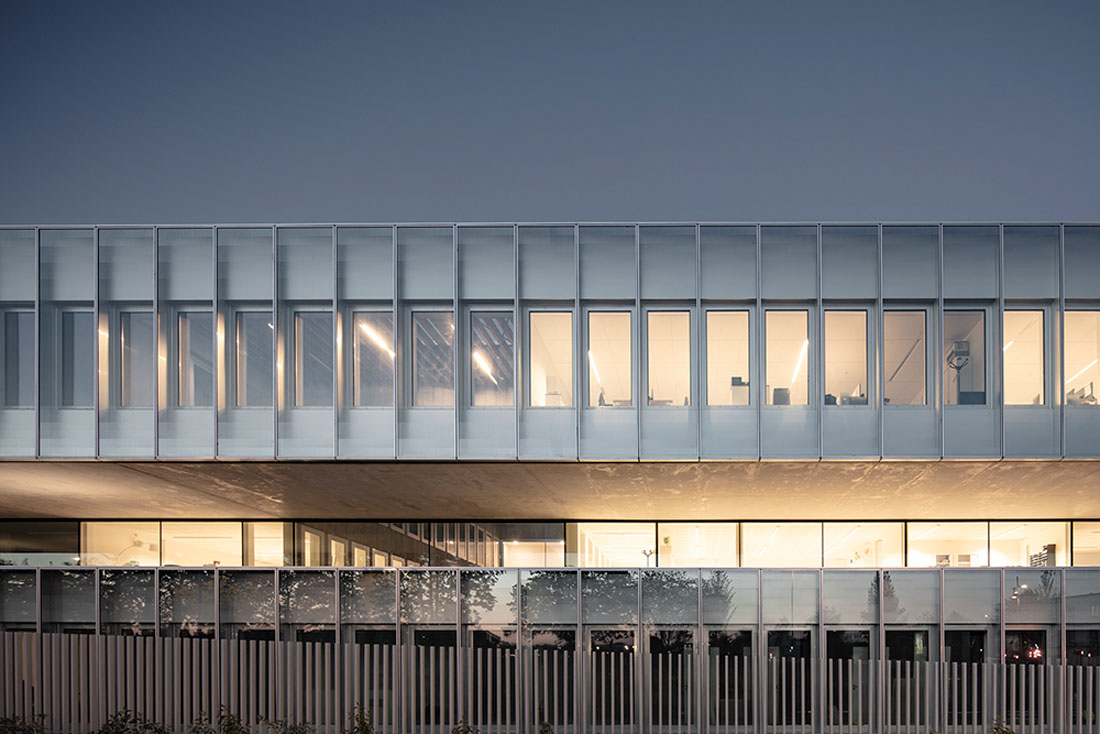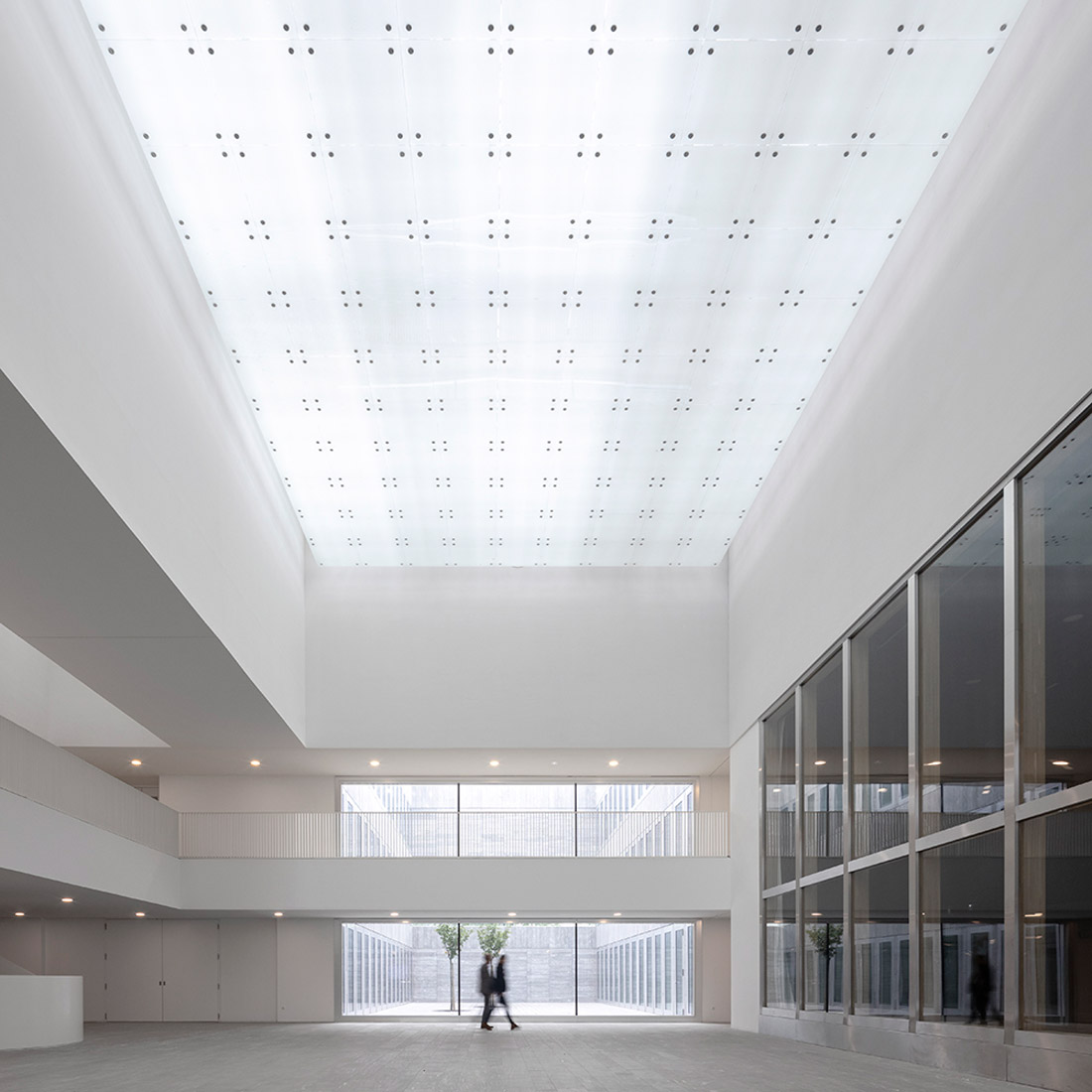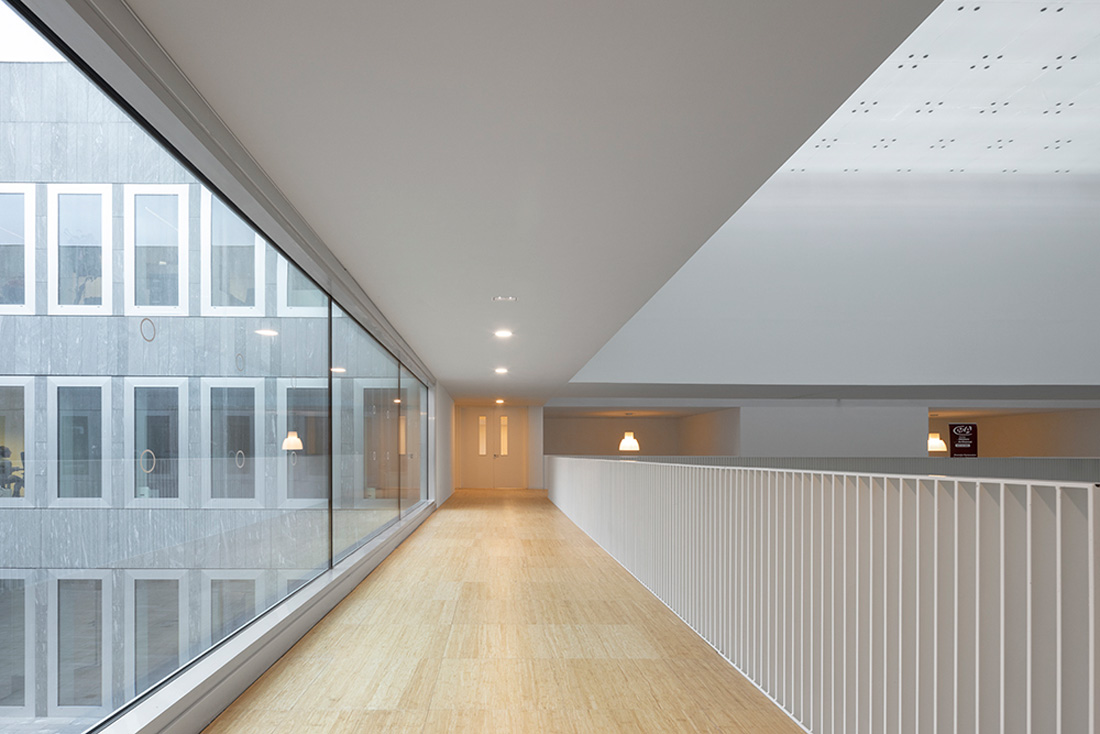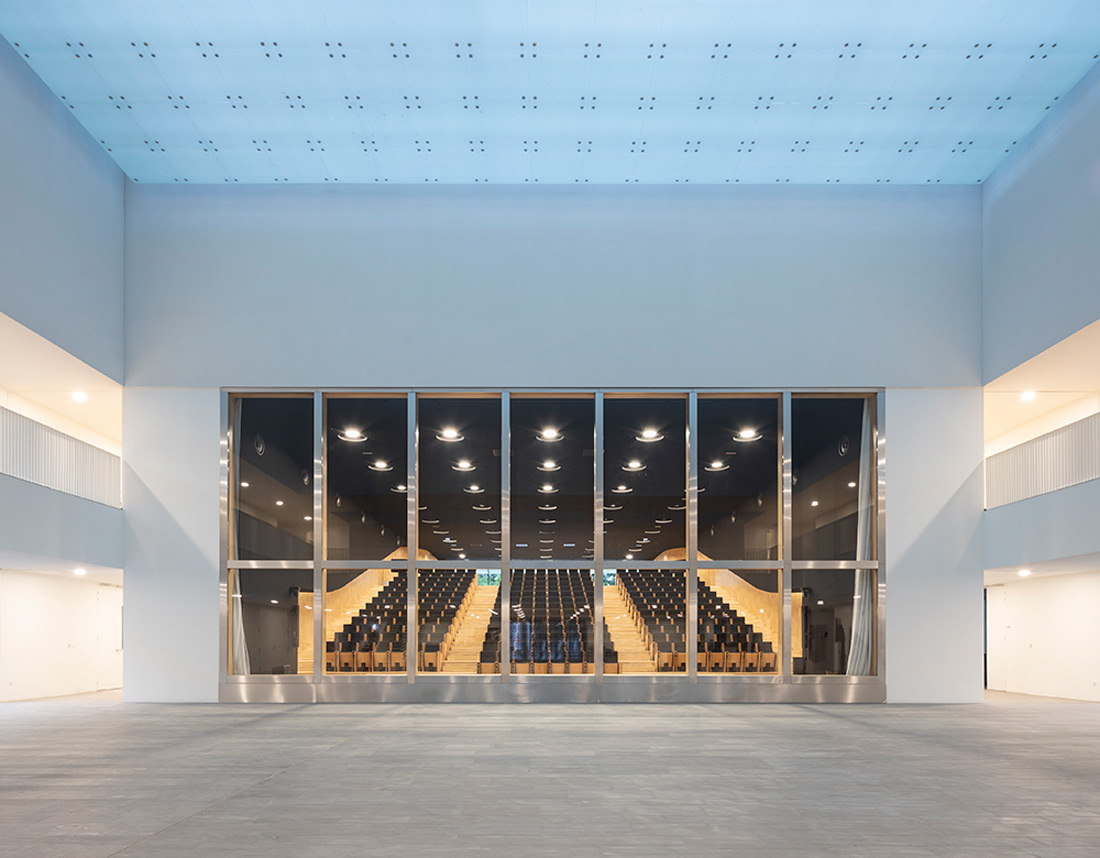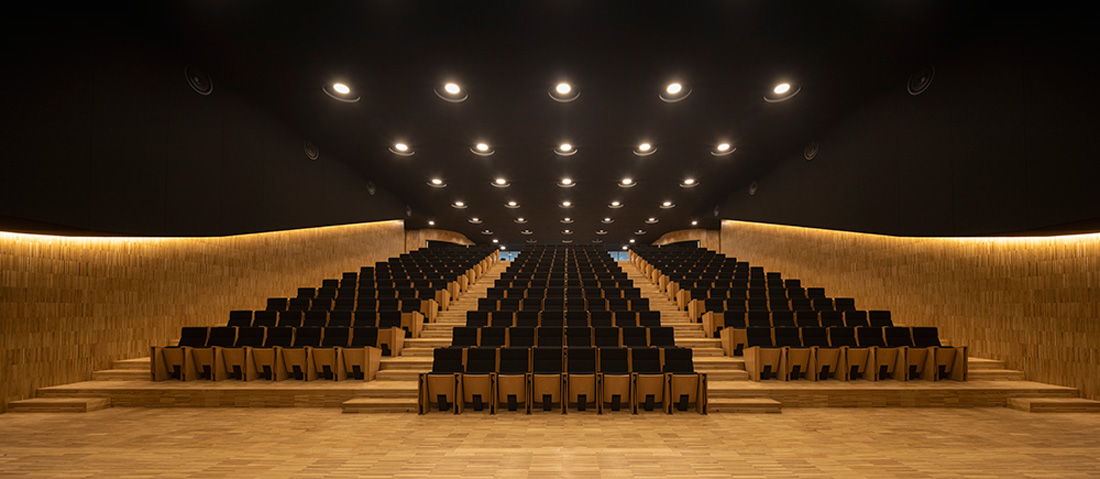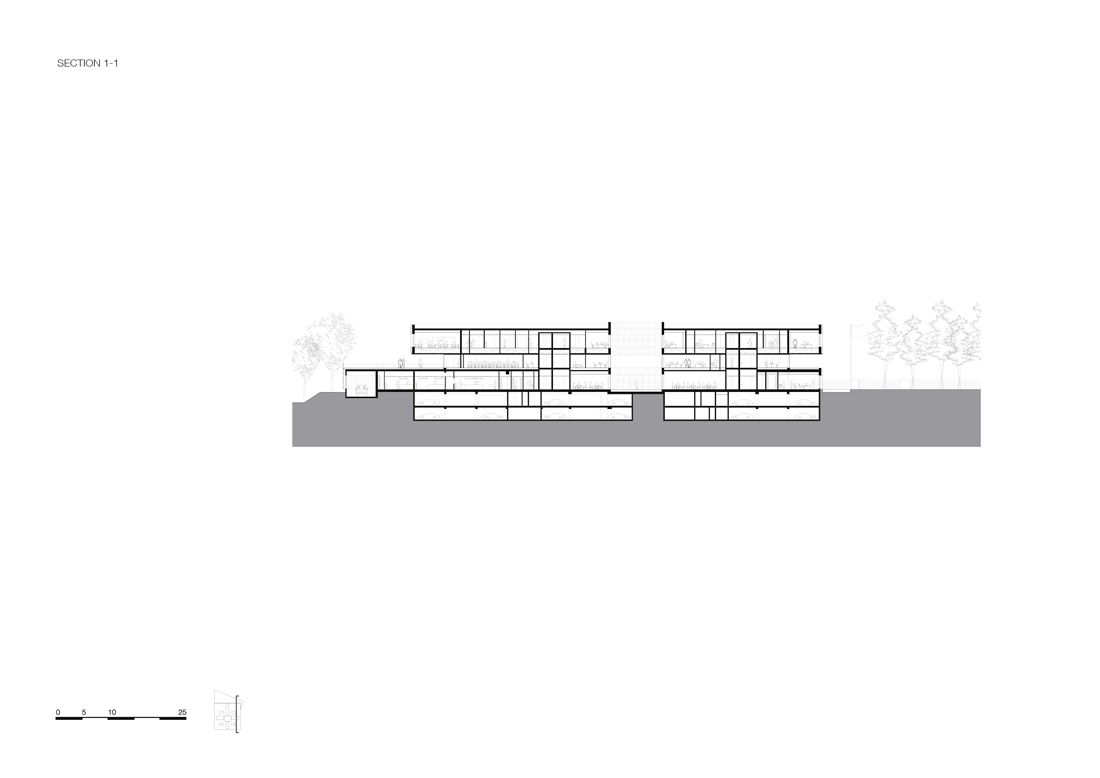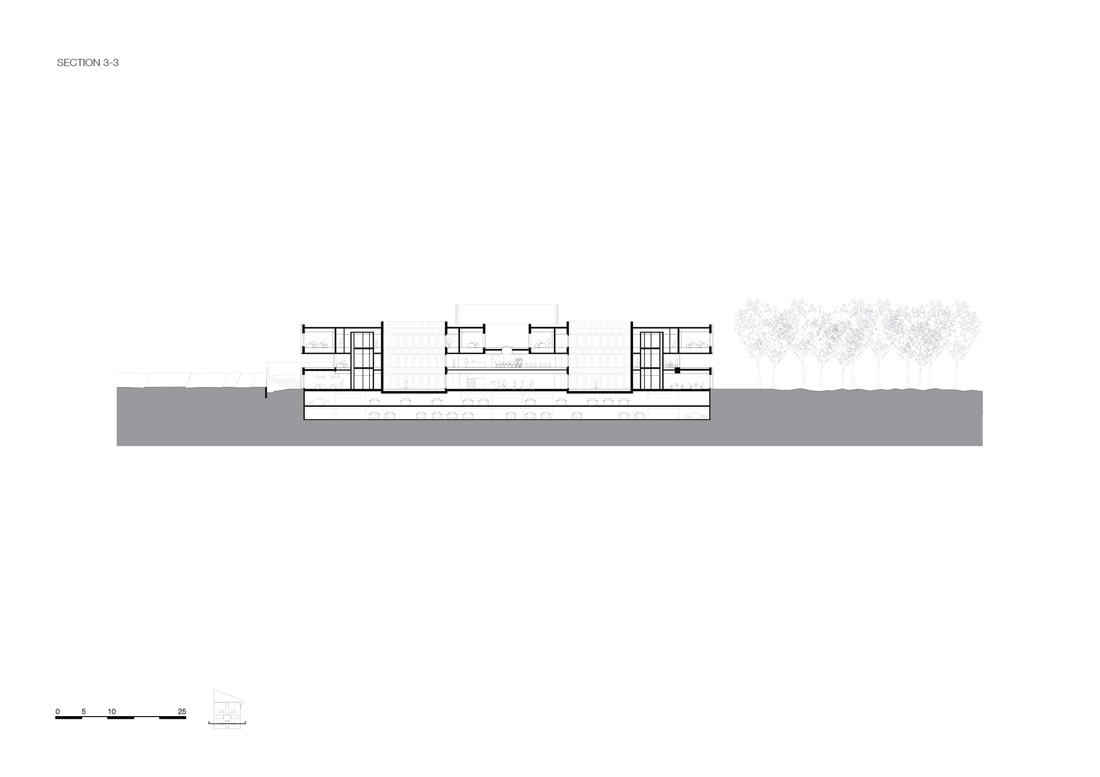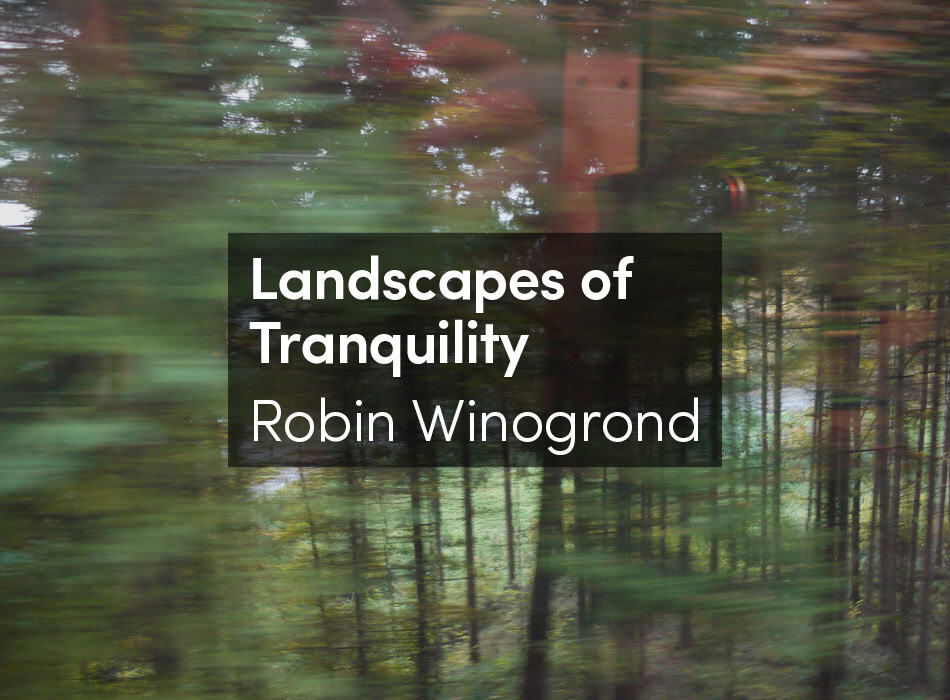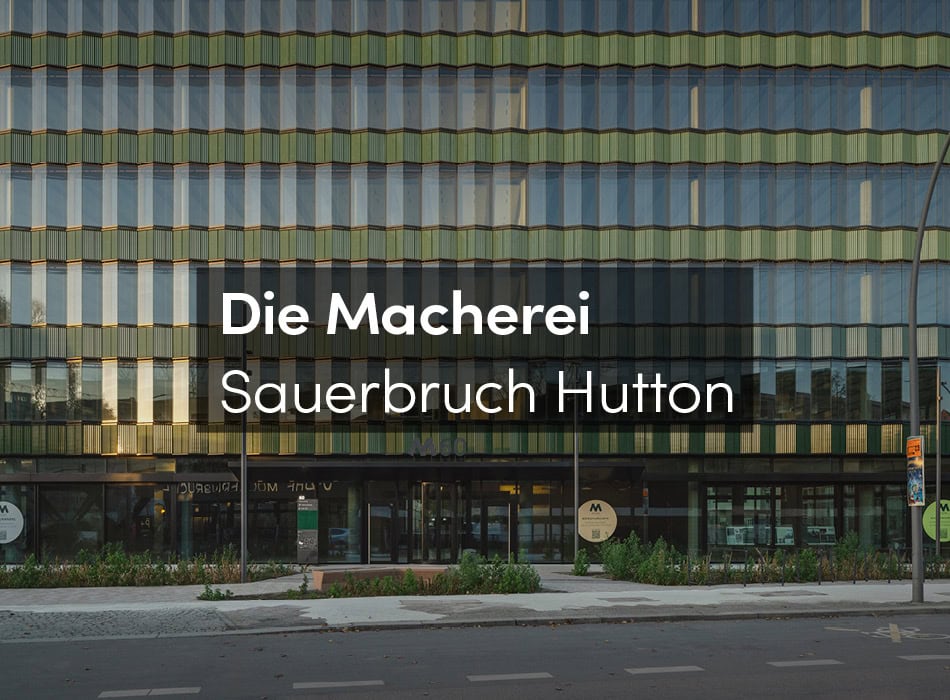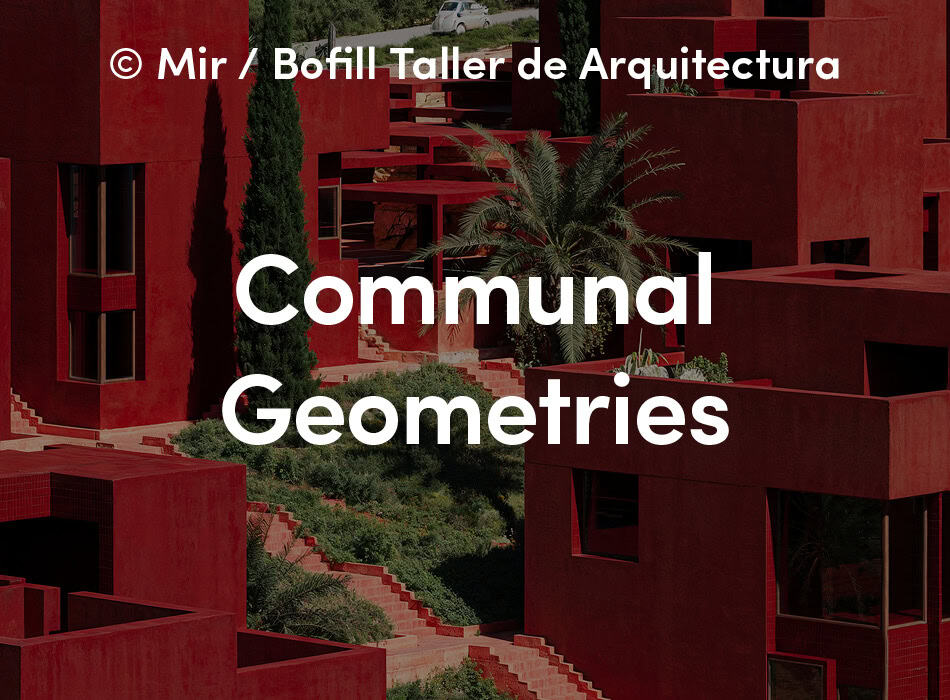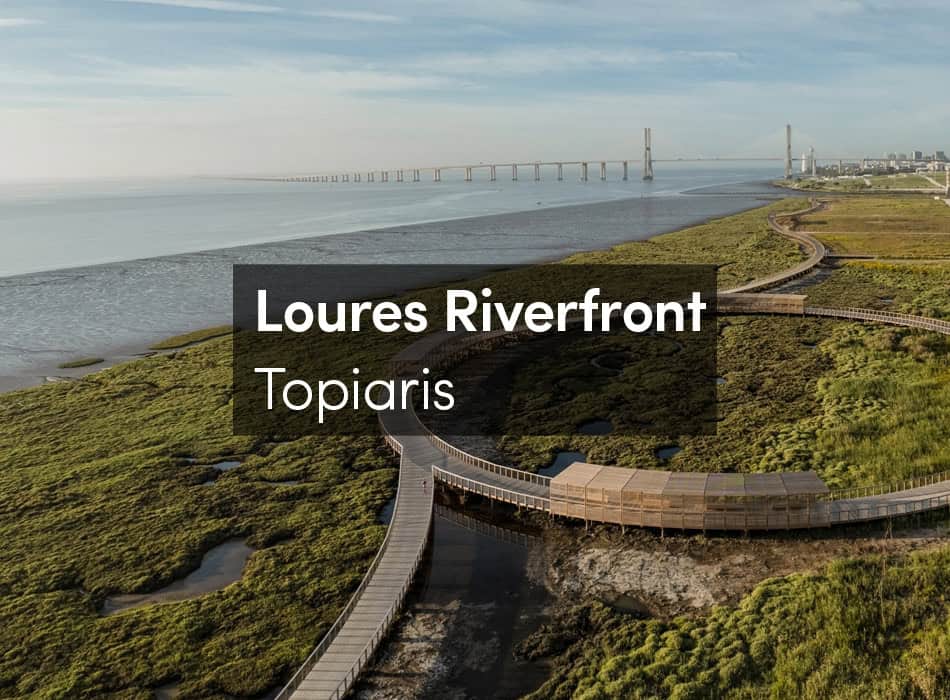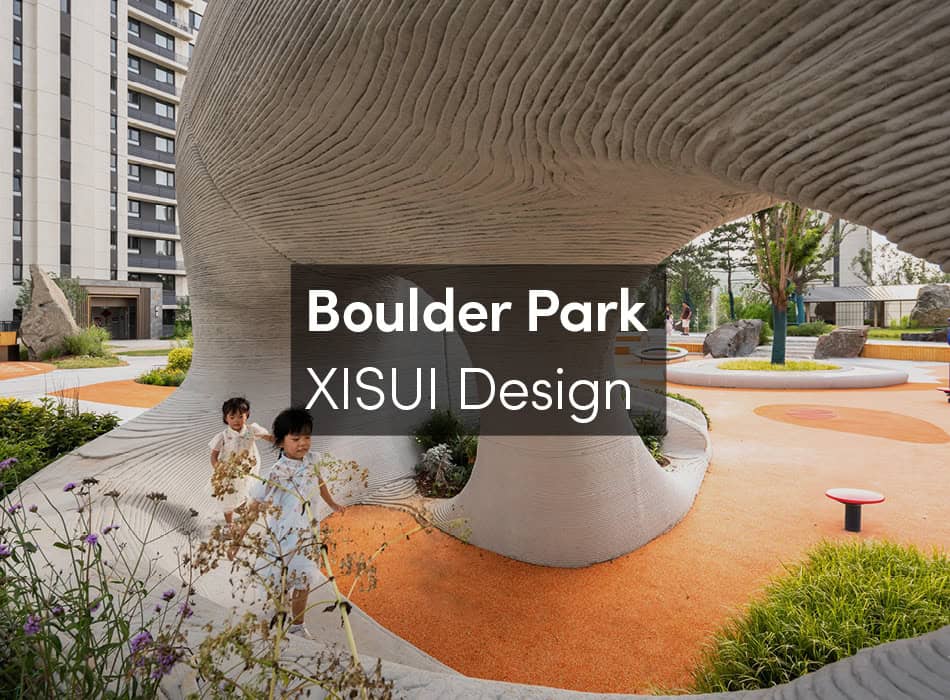The CMA is set along the edge of the former 17th-century Vauban fortification, now replaced by a high-speed ring road. The northern border of the site is defined by a railway line and the botanical garden: Jardin des Plantes de Lille. To the south, Rue Abélard defines the perimeter of a wider masterplan area designed by KAAN Architecten and PDAA, which comprises CMA headquarters, a future complex of five buildings, and a lush park spanning the site as an extension of the nearby garden.
With its minimalist esthetics and elegant transparency, the monolithic building enacts an embracing and protective gesture towards the surrounding nature, reinforcing the dialogue between the diverse elements of the area.
In broad horizontal strokes, the CMA spreads over three floors, rising from a square-shaped footprint of 80 by 80 meters, providing both educational functions and spaces dedicated to supporting craft businesses. Each floor holds a strong connection to the green landscape. On the first floor, KAAN Architecten and PDAA have designed a prominent cantilever that frames a scenic view of Lille and the gardens.
The building features two public squares on different levels. On the ground floor is the new Place des Artisans (south), while a large terrace to the north on the first floor aligns the project with Rue du Faubourg d’Arras and connects with it via a bridge. Both public entrances are linked by an enfilade of representative spaces: southern square, entrance hall, the auditorium and its foyer, as well as a wide opening overlooking the north terrace. Moreover, each entrance serves the two main architectural realms: the apprentice training center and offices devoted to supporting craft business procedures.
The CMA is symmetrically organized around six patios that provide natural light for most circulation spaces and divide the building into four clusters, housing different realms and spanning all three levels. Functions vary from local and regional administration to research and educational facilities (hairdressing school, cooking school, laboratories, classrooms). The new building acts as a hub for both the Chamber of commerce and the associated training schools, which were previously scattered throughout the historic city center of Lille.
In order to interact with the urban fabric and the surrounding landscape, the architects have paid great attention to the use of natural materials: glass and stone. The ground and second floors are wrapped by a modular double glass façade that ensures climate control and quality acoustics. Spanning the full floor height, each module features an inner polished aluminum window which can be opened and a fixed outer glass panel with a reflective print that gradually fuses to create a fully transparent zone at eye level while blending the building into nature.
Moreover, the patio façades, which feature large polished aluminum window frames, are clad in Vals Quartzite, a very solid, compact and frost-resistant stone from Switzerland. The same stone has been used on the patio floors, as well as in the entrance hall to enliven the link between exterior and interior.
Through its solid materiality, Eurartisanat aims to both articulate, absorb and reflect the surrounding landscape while at the same time standing out as a new iconic element, an inhabited landscape dedicated to the public sphere.





